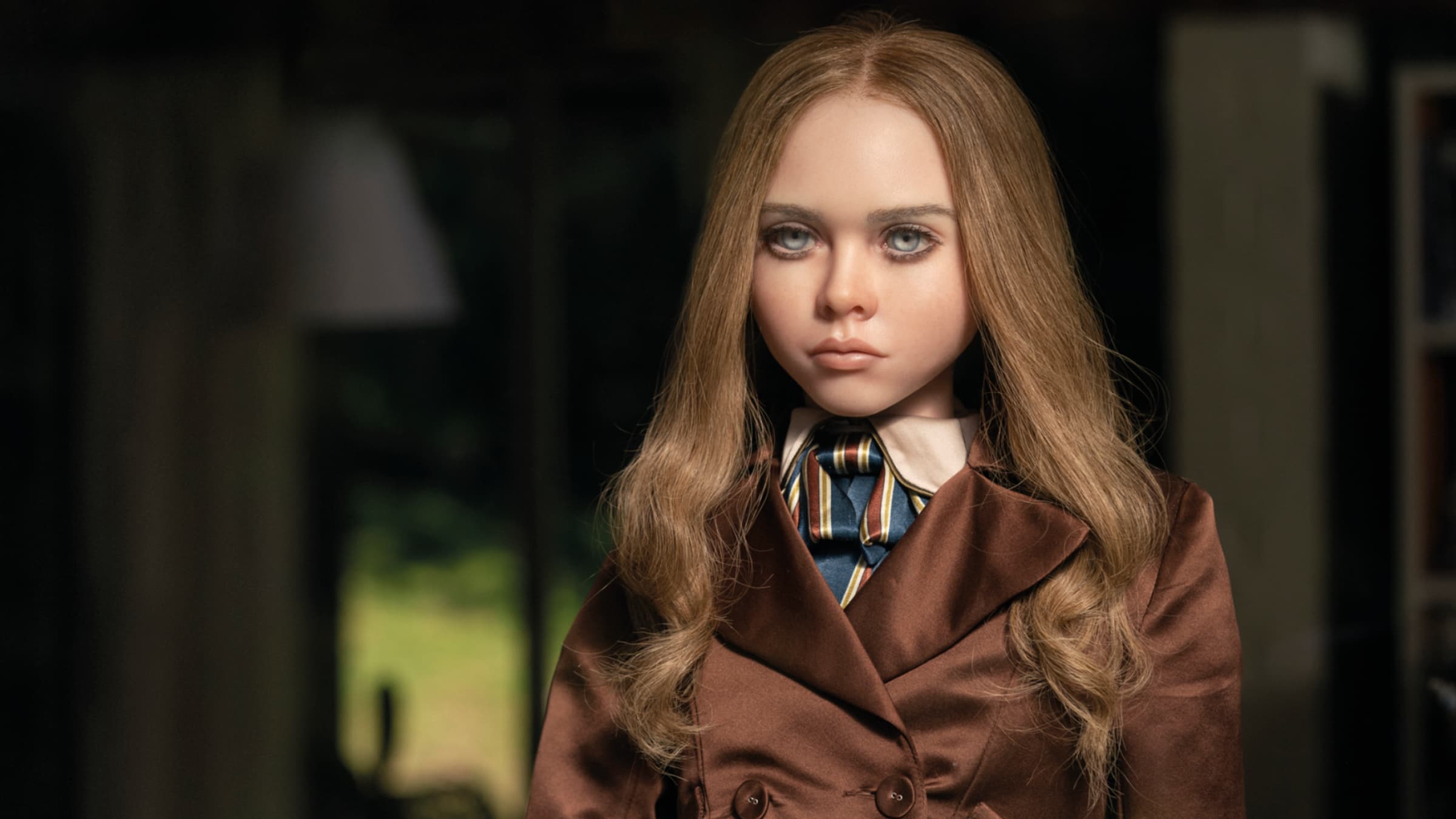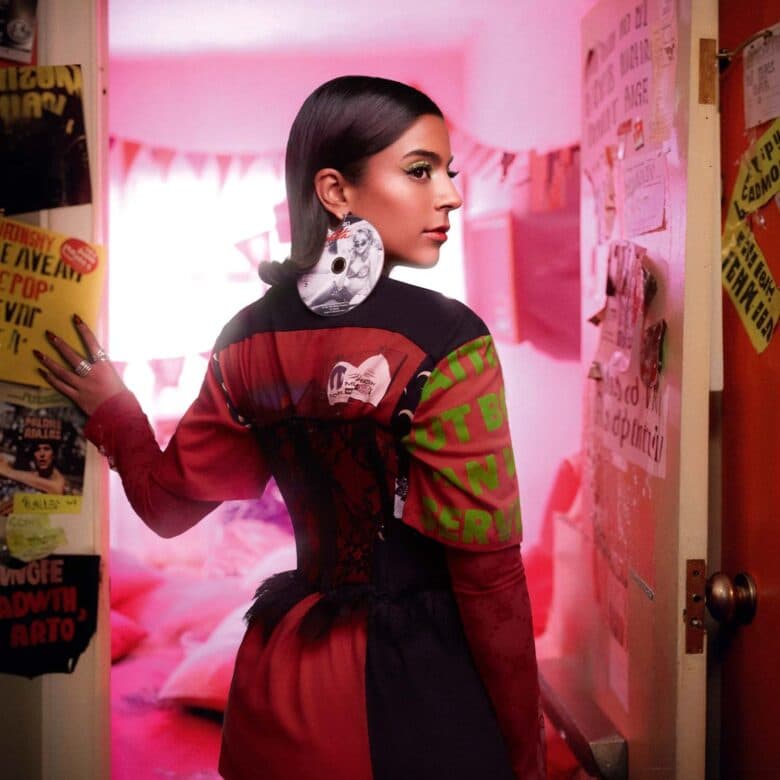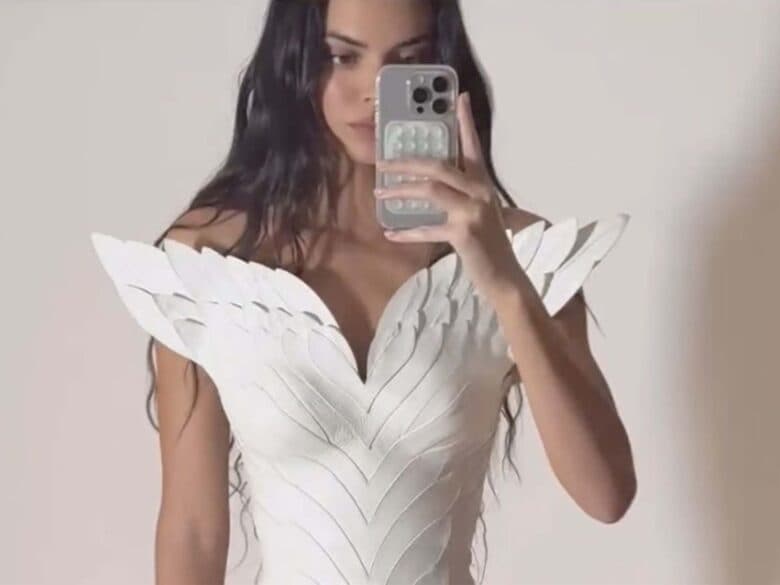Not exactly the ‘Barbie’ effect: dolls are back and they’re creepier than ever

Since the dawn of the fashion model, we’ve grappled with the implications of making a woman’s body into a mannequin. We’ve grappled with, in other words, making women into dolls. We’ve sought to create an industry that treats its mannequins with a semblance of respect, and it’s been a long ol’ battle to make the parameters of who’s considered a model less stringent. For many, the crowning moment of all those years of reform was Greta Gerwig’s Barbie, which told its audience that women can’t exist within the rigorous confines something like modelling perpetuates. And during a summer all about a little plastic doll, dolls were simultaneously no more. But if the recent shows by Maison Artisanal and Marc Jacobs are anything to go by, our love of “real” women has ended just as it started. Dolls are back, are more doll-like than ever, and they’re finding their way beyond fashion. More than that, they’re leaning into their creepy roots.
Last week, Marc Jacobs chose to commemorate the 40th anniversary of his brand with a show that saw its models descend the runway in oversized silhouettes that paid homage to paper dolls, huge bouffant hair straight off a Cindy, and doll-like makeup. To really hammer things home, the models even walked amongst giant pieces of furniture. You get the idea: he was going for the doll thing, and by doing so he was continuing a tradition set out by landmark shows like Thierry Mugler’s 1995 “Le Cirque” collection, and collections from Moschino back in 2014 and 2016. Really, Jacobs probably took cues from the unprecedented popularity of doll-inspired fashion over the past few years too – who could forget the MSCHF boots or Loewe’s “Polly Pocket” dress.
View this post on Instagram
In that sense, you could brush off Jacobs’ latest collection as more of the same. But we’d argue that 2024’s rendition of doll-ification feels a little different, and that’s illustrated no better than Maison Margiela’s 2024 Artisanal Collection. Rather than leaning into the squeaky clean aesthetics of our plastic pals, designer Galliano decided to honour their creepy roots. Models stumbled down the runway in dishevelled fits which made them look like dolls that Sid from Toy Story had got his hands on, and Pat McGrath’s viral makeup rendered their skin eerily shiny and their brows scarily skinny. In the few weeks since the show took place under the Pont Alexandre III bridge, the hype around McGrath’s looks online even transformed her into an elusive Miss Havisham-esque figure. While young people previously unfamiliar with both her and Galliano’s work waited with baited breath for the makeup artist to drop the porcelain skin tutorial, they mused on her mysterious identity: in one TikTok, someone expressed their surprise that McGrath was, in fact, not a “bald middle aged white man [sic]”.
It all adds up to something that suggests we might be witnessing a return to the true meaning of dolls: that of all things “uncanny valley”. The notion of the “uncanny” first came from none other than psychologist Sigmund Freud, who used the term to describe things that were both familiar and unfamiliar at the same time; according to Freud, a prime example of the uncanny was none other than a doll. The term “uncanny valley” came a little later, born out of a 1970 paper by Japanese roboticist Masahiro Mori. In his influential essay, “uncanny valley” was the term he used to describe the “cold, eerie feelings” we get when we see robots or non-humans that look that little bit too human.
Gen Z and Gen Alpha were introduced to the concept via a TikTok trend that made the rounds late last year: users slapped on whatever makeup was necessary to make them look creepy, doll-like, and a bit like a robot. While we doubt that by doing so they were harking back to Freudian theory – it felt more like they were emulating decidedly internet age phenomena like Momo – for in the know onlookers, it was clear they were unconsciously going for that glazed over look of the things they used to play with. And you see that elsewhere in other pockets of online culture. Also popular last year were all those creators cashing in on NPC live streams: they’d spend hours and hours evoking the stiff movements and catchphrases of a video game character on TikTok’s live feature. This kind of content – which made one proponent of the trend $7,000 a day – had people “confused”, but not many made the link that their reaction might be down to how completely uncanny it was.
Our penchant for creepy dolls has been bubbling to the surface outside the online sphere as well. Early 2023 saw the release of the film M3GAN, which follows an AI doll that gains sentience and, in short, turns evil. The prevailing takeaway from M3GAN wasn’t how good of a film it was, but just how fascinated we are with dolls like her. And though it’s arguable that M3GAN is simply following suit of films like Poltergeist, Child’s Play and Annabelle, we’d argue that living through the experience of all faces being mediated by screens and pixels – rendering everyone kind of uncanny – is making our appetite for creepy dolls bigger than ever before. Case in point? The fictional M3GAN landed an interview with Dazed.
If we had to put a finger on why exactly we’re going so doll-mad, we’d point to the fact that a lot of people just don’t look like people anymore. The Kardashians ushered in an hourglass figure more suited to Barbie than someone with 24 ribs, and the heady mix of augmented reality Instagram filters, Facetune and the omnipresence of wrinkleless, filler-ified faces has made “perfect” the norm. To phenomena like these, doll-ification is a kind of angry retort: taking the unattainable beauty standards that have become en-vogue to their most extreme. Ironically, the doll-like aesthetics on display over the past few months might even be more achievable than those by people who purport they’re just skin and bone. Pat McGrath’s iconic glassy skin for Galliano? Her hotly anticipated tutorial revealed it was achieved through a blend of “several different ingredients – including water and different gel-like masks”. Whereas Kim Kardashian’s enviable figure? While she refuses to admit it herself, it’s thought to be the result of a Brazilian butt lift, and we’ve all seen those videos of the post-BBL plane rides.
View this post on Instagram
That’s not to say backlash to our rigorous beauty ideals comes in the form of doll-ification only. Online discourse has recently turned to the idea of moving away from filler, and that’s in part thanks to the (slightly puffy) appearance of Kylie Jenner at the Jean Paul Gaultier couture show last month. Amongst those online callously weighing in on her face, the consensus was clear: filler can be overused, and it has a sell-by date. But make no mistake, our society-wide stride for perfectionism isn’t going anywhere, and for that reason creepy dolls will stay. Now, the best thing to do is just get a headstart on 2024’s creepy doll trend: swap out the hordes of Sonny Angel dolls you accumulated last year and follow suit of a fair few other TikTokers by making your own Coraline doll. It’s certainly a fun (stroke odd) way to spend a weekend.

